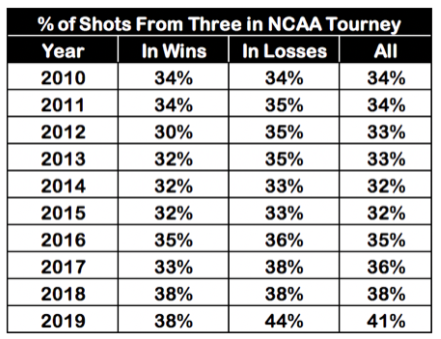When I finally tuned in there were less than ten minutes to play.
9:35 to be exact.
Kentucky’s Johnny Juzang had just knocked in a 3-pointer to increase the Wildcat’s meager lead to eight, 58-50. Twenty-four seconds later, Texas Tech missed a jumper, foreshadowing the utterly dreadful nine minutes of basketball that were about to unfold.
Eventually, Kentucky pulled out a 76-74 victory in overtime but I never got that far. The final minutes of regulation play were enough for me. In all, 4 field goals, 10 turnovers, 10 fouls.
On average, over the course of nearly ten minutes of play, two top-20 teams, representing premier D-1 programs with access to the best recruits in the country, collectively generated one basket every two minutes and forty seconds of play. Yikes!
Ten seconds after a timeout at the 1:11 mark, the Wildcat’s Tyrese Maxey missed a quick jumper and was promptly criticized by ESPN’s Jimmy Dykes. “Not a good shot… you gotta run some offense.”
“Jimmy,” I shouted at the screen, “I’ve watched Kentucky ‘run offense’ for the last nine minutes and nothing good has happened.”
When your offense produces one basket on seven shot attempts during the final quarter of play – that’s roughly a field goal attempt every 1 minute and 43 seconds – there’s not much benefit to “running some offense.” You might as well jack it up and hope that by increasing your attempts something eventually goes in.
For their part, Texas Tech didn’t fare much better. During those final 9:35 they went 3 for 12 from the field, only catching Kentucky as regulation expired on the back of seven free throws.
Look, I get it.
Every team has an off night or stretches in a game when the wheels come off. And lots of time, the bad play becomes infectious, one team dragging its opponent into the mire. Last Saturday’s game between 15th ranked Kentucky and 18th ranked Texas Tech is neither indicative of their true prowess or representative of the state of college basketball this season… but it’s not far off, either.
We began this season with coaches, commentators, and fans all asking the same question: how will college basketball’s new 3-point line affect the game?
Will extending the line to the international distance of 22 feet, 1¾ inches curb the game’s growing emphasis on the 3-pointer, leading to greater variety in offensive style and strategy as the NCAA intends? Will shooting percentages at the longer distance remain sufficient to pull defenders even farther from the basket, opening the floor for more dribble drives and offensive maneuvers inside the arc? Will players who lack long-range proficiency rediscover the value of the post up and short range jumpers?
With two-thirds of the season behind us we can reach some tentative conclusions.
Continue reading…
